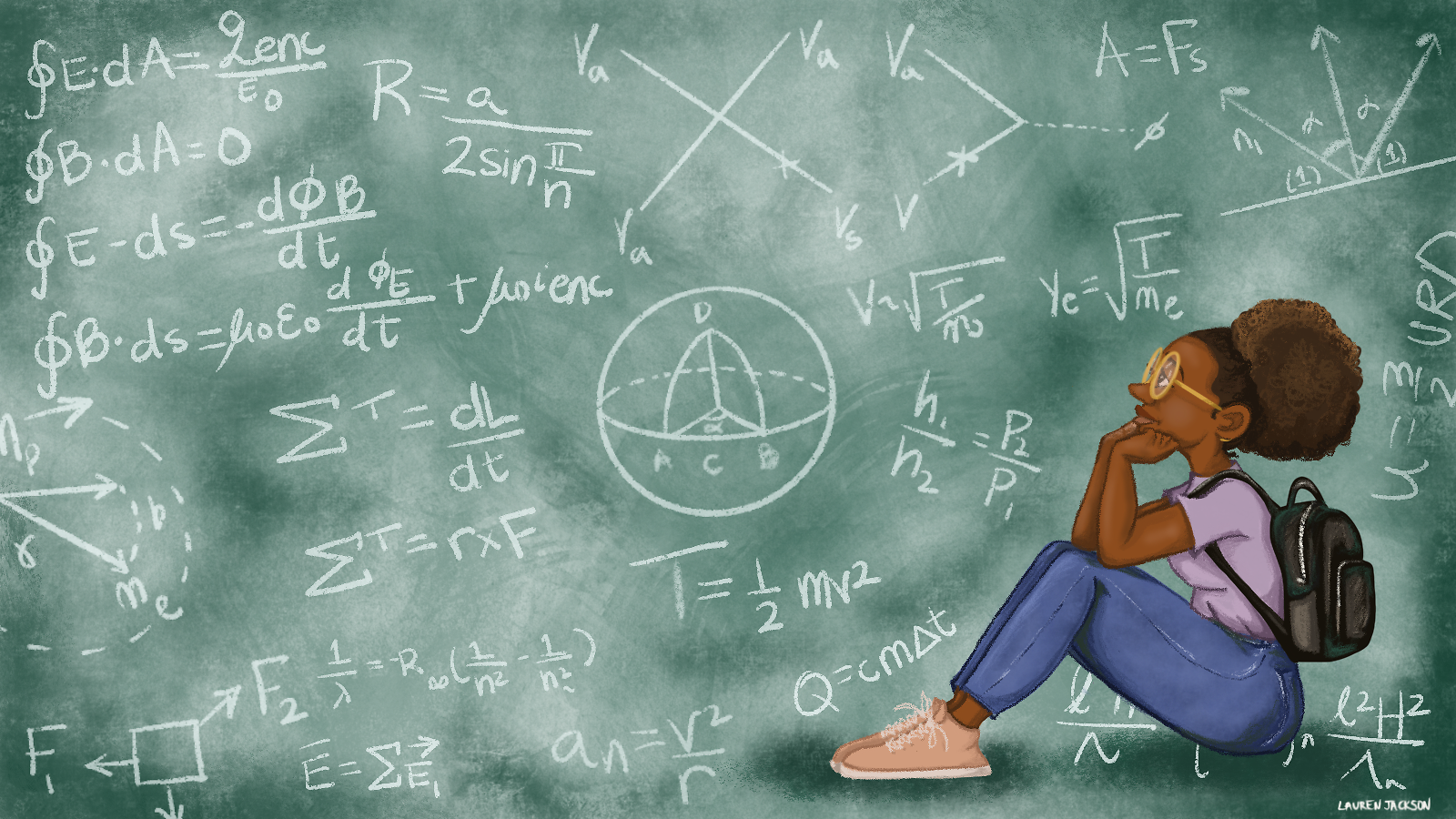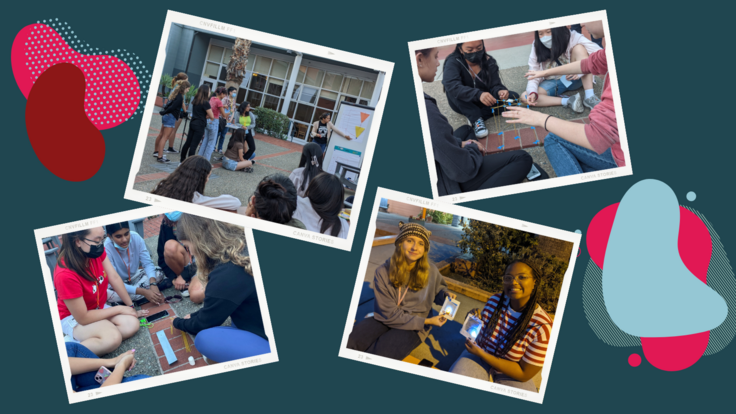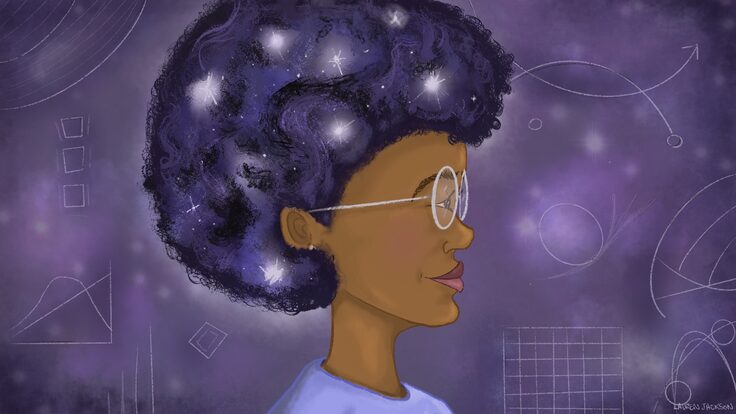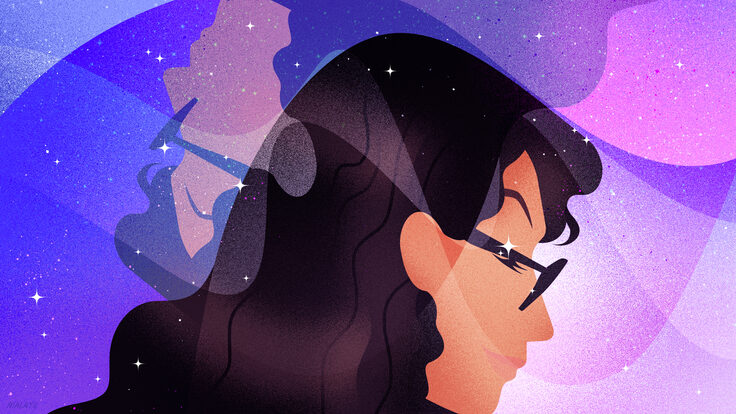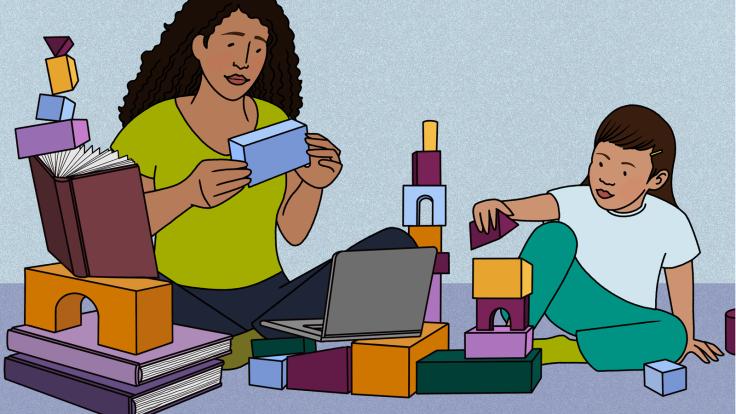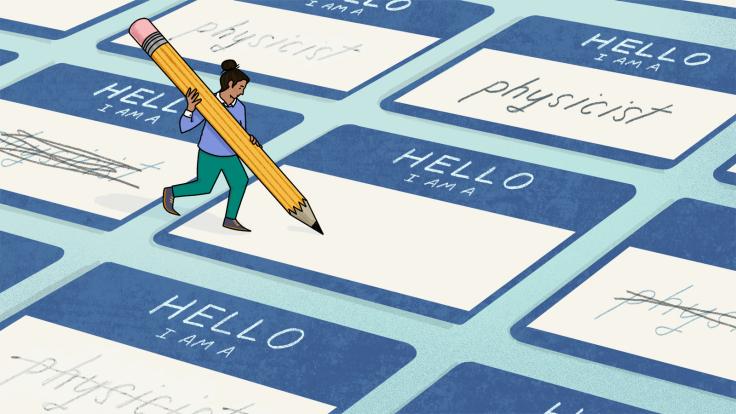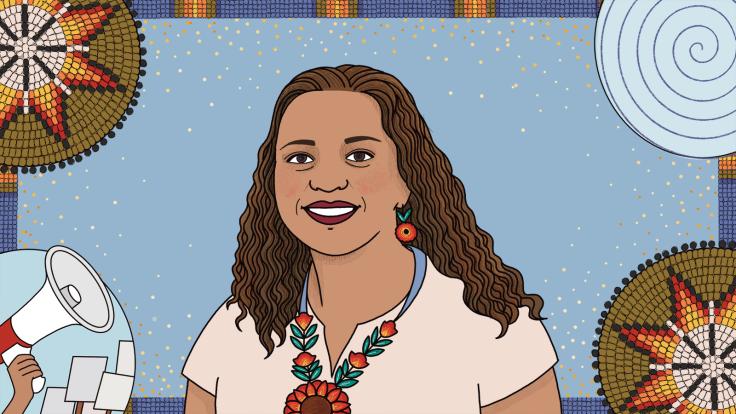Alexander Gardner mailed his application to North Carolina A&T from what was likely a military prison cell somewhere in the US South. It was the mid-1950s; Gardner would have been in his late 20s. He had run away from home at the age of 14 to join the US Merchant Marines.
Gardner had been incarcerated for punching a commanding officer who called him a racial slur. He had only an 8th grade education, but North Carolina A&T—a university located in Greensboro, NC—saw his potential. They accepted him, and he graduated in 1958 with a degree in engineering physics. Five years later, Gardner became the first Black person to earn a physics PhD from the University of North Carolina at Chapel Hill. He returned to North Carolina A&T the year after that, this time as a member of the physics faculty.
“That’s an unbelievable story,” says Arlene Maclin, a former physics professor who credits Gardner as one of her earliest and most important mentors.
However, it’s far from the only extraordinary tale of triumph over adversity to come out of the Black physics community. And it was possible, in part, due to the unique support Gardner found at North Carolina A&T, which is classified as an HBCU, a Historically Black College or University.
“We don’t have five Black women physicists anywhere working together.”
HBCUs have played an important role in bringing Black students into physics. Prior to 2003, HBCUs consistently graduated the majority of Black physics-degree holders. In the year 2000, HBCUs enrolled just 13% of all Black postsecondary students but awarded a staggering 60% of physics degrees earned by Black students that year. Those numbers have been on a steady decline in the years since, but HBCUs still produce a disproportionate share of Black physics graduates today.
In 2020, there were 101 active HBCUs in the United States. Thirty of them offer a bachelor’s degree in physics, and 11 of those offer a master’s degree in physics. Just four of them—Alabama A&M University, Florida A&M University, Hampton University and Howard University—offer general physics PhD programs. HBCUs granted only an estimated 11 of the 1,910 physics PhDs awarded to US graduate students in 2018 and 2019.
Advocates for recruiting and retaining more Black students into physics often discuss how to balance support for Black students at HBCUs like North Carolina A&T, and at Primarily White Institutions like UNC Chapel Hill. But the Black physicists who’ve emerged from both HBCUs and PWIs suggest that the physics community should be more concerned about structural challenges that minority physics students face everywhere, and the toxic environments that can be found in any academic department.
A new initiative called TEAM-UP Together, aimed at doubling the number of African Americans earning undergraduate degrees in physics and astronomy by 2030, will work toward those goals.
The community of an HBCU
Black students, especially Black women, are vastly underrepresented in physics. Despite making up 15.64% of the college-age population, Black students earned an average of 3% of bachelor’s degrees in physics between 2014 and 2018, according to the American Physical Society. The majority—74.5%—of those degrees went to Black men. During the same timeframe, Black students earned just 1.8% of doctoral degrees in physics.
Experts and alumni of HBCU physics programs agree that HBCUs succeed in attracting and retaining Black students because they can create a supportive environment for students from all walks of life, even the most disadvantaged.
“HBCUs get the broadest breadth of the African American community,” says Hakeem Oluseyi, president of the National Society of Black Physicists. “Everybody gets the top. Everybody gets the middle class. But for those of us who are the real deep strugglers—who are just as brilliant, who are just as capable, and likely very much more hard-working—the HBCUs are, in many ways, our bridge into that world, because they understand us from where we're coming from. Most of these other places don’t.”
Thomas Searles, an associate professor of electrical & computer engineering at the University of Illinois Chicago, agrees with Oluseyi. Searles earned his undergraduate degree at Morehouse College and served as an assistant professor of physics at Howard University, both HBCUs. “HBCUs are about mentoring all students, not just the best and the brightest—everybody,” he says.
Still, HBCUs are not exempt from issues related to bias and discrimination.
“I’ve experienced more sexism at HBCUs than I experienced in other places that I've worked, and I've worked at the NSF, the CIA, MIT Lincoln Lab, Oak Ridge,” Maclin says. “As a Black woman, I was prepared to deal with racism, but not sexism.”
More women than men have enrolled at HBCUs in every year since 1976. But Maclin explains that even at HBCUs, Black women in faculty must work harder to gain tenure and secure administrative support for their initiatives. The most recent data reported by the National Center for Education Statistics for the fall of 2001 found that Black women represented 27% of all full-time instructional and research faculty and 17% of full professors at HBCUs—with Black men making up 31% and 36% of those roles, respectively. Maclin suggests that HBCU physics students who are women likely face similar difficulties.
“Black women still do not have a critical mass in physics, anywhere,” Maclin says. “We don’t have five Black women physicists anywhere working together. Nowhere.”
Maclin says she once offered to help the chair of an HBCU physics department recruit more Black women. “He never took me up on that challenge,” she says.
Tennille Presley, an associate professor of physics at Winston-Salem State University, an HBCU in North Carolina, says she has similarly noted a disconnect between the gender breakdown of students and professors at HBCUs.
“I agree with Dr. Maclin,” Presley says. "In general, there should be more diversity in physics departments, especially as it relates to the inclusion of Black women and other women of color—and that includes both students and faculty."
Of course, Black women in PWI physics departments also face challenges that their Black male peers do not. The same is true for Black physics students who may be LGBTQIA+, disabled, foreign-born, or who hold any other marginalized identity in addition to being Black.
“Certain identities are seen as conflicting [with our ideas of] who a scientist is, and who a physicist is,” says Farrah Simpson, a doctoral candidate in physics who earned her undergraduate degree at Columbia University, and who also serves as student representative on the National Society of Black Physicists executive board.
“Being Black, queer and a woman—all these intersectional identities—a lot of the time I feel within scientific spaces that people expect you to behave a certain way, or to have a certain identity, and your identity is [seen] as contradicting that,” she says.
The resources of a PWI
Maintaining a doctoral degree program in physics requires resources that historically and chronically underfunded HBCUs may be unable or unwilling to provide.
“Physics departments are not cheap to maintain for the university,” says Claudia Rankins, former dean of the School of Science at Hampton University. "Many small physics departments only graduate a few students every year, yet the professors who teach the upper-level courses, as well as the labs, need to be there….[It's] the same struggle other small programs or majors encounter."
Recruiting and retaining faculty is also a challenge for cash-strapped HBCU programs, where faculty made an average of $24,000 less per year than their PWI counterparts in 2019-2020.
So, the majority of physics doctoral degrees—more than 99%, according to the AIP—are awarded by PWIs.
Institutions have partnered via “bridge programs,” which are specifically designed to help students transition from undergraduate and/or master’s degrees at an HBCU to a doctoral degree at a PWI. These programs aim to provide mentoring that students moving to an institution where they are in the minority may need and may not receive. However, HBCU faculty and bridge program alumni often criticize these programs for failing to deliver adequate support to the students who participate. In part, the issue comes down to a lack of emphasis on mentoring at PWIs, especially the most elite.
“I’ve heard from professors at MIT who have said, ‘Well, HBCUs are smaller; they have fewer students. They can afford to really mentor students in a proper way. At a place like MIT, we don’t have that luxury,’” says Dara Norman, deputy director for the Community Science and Data Center at NSF's National Optical-Infrared Astronomy Research Laboratory.
Norman says this attitude is common among faculty at R1 universities. But Norman, who took nearly all of MIT’s core physics classes as part of her undergraduate degree, also says that mentorship is crucial for students who may not know what to expect when arriving on university campuses.
“My parents did not go to college in the regular way; both my parents were in the Navy,” Norman says. “When I got to college, I realized I didn’t really know what college was…And I couldn’t fall back on my parents’ experience…I wonder—if I had hit the ground running, would I have been in better shape?”
PWI physics departments can also create environments that are actively hostile toward Black students.
Charles Brown, a postdoctoral researcher in quantum simulation at the University of California, Berkeley, can detail numerous instances of racialized microaggressions and even open hostility during his time as a graduate student in the physics department at Yale University. In a 2020 Physics Today article, Brown recounted stories of strangers handing him trash as though he were a member of the cleaning staff; of being denied entry to buildings while streams of non-black people passed by without showing ID; of being constantly asked whether he was affiliated with Yale at all.
“It puts cracks in the foundation of your identity in the field, of your sense of belonging to the field,” Brown says. “Being a student is hard. You’re learning lots of difficult stuff. You’re navigating some new environment. And when you’re getting constant messages that you don't belong, and that you're not respected, it makes it that much harder to do the thing that’s already hard for students of any background.”
Different students deal with these encounters in different ways, but however Black students may process these incidents, they do add up, says Falcon Rankins, head of PRISSEM Academic Services, an organization that works to support Black HBCU STEM faculty.
“[There is so much] labor that Black students, female students have to do in terms of that calculus around, you know: Is this racism?” Rankins says. “Is this person being sexist? Is this person assuming that I don’t know how to do something because I’m Black? All those questions that we have to ask ourselves—I think that’s real labor that isn’t always appreciated as labor.”
Working to provide both
Ultimately, providing students with a welcoming environment is crucial to retaining those students at any educational institution. “We keep [pursuing] these pipeline-building efforts without asking, ‘Where does this pipeline dump out at the end of the day?’” Rankins says, noting that this applies to the entirety of the physics ecosystem and STEM fields as a whole.
“[Physics] departments need to take a really close, deep-dive, data-driven look at what's going on in their particular context, and fix that,” says Arlene Modeste Knowles, who serves as project manager for the American Institute of Physics’ National Task Force to Elevate African American Representation in Undergraduate Physics & Astronomy (TEAM-UP). “Because if you recruit students into a toxic environment, it's going to be a revolving door. Those students aren't going to make it through.”
In 2020, the AIP published an example of exactly the kind of data-driven work Knowles is talking about with “The Time is Now,” a detailed report based on the organization’s two-year study examining the underrepresentation of Black students in undergraduate physics departments.
In April, the TEAM-UP diversity task force was awarded a $12.5 million, five-year grant by the Simons Foundation and Simons Foundation International to launch TEAM-UP Together, a collective action aimed at helping the task force achieve its goal of doubling the number of African-Americans earning undergraduate degrees in physics and astronomy by 2030.
The grant will initially support scholarships for students studying physics and astronomy at HBCUs and other predominantly Black institutions, before eventually extending to students at all undergraduate institutions in the US. The funding will also support undergraduate departments that have committed to implementing recommendations set out by the 2020 TEAM-UP report.
“I don't want to see any other African American students endure harm in a physics or astronomy department,” Knowles says. “I want to see them thrive in those environments. With TEAM-UP Together, which will support the physical science community and leverage the enormous influence of AAS, APS, AAPT, SPS and AIP to catalyze systemic change, we have a chance at making this a reality.”
While there is no surefire solution to these problems, Presley suggests that the physics community would do well to fall back on the tool it knows best: “Educate others,” Presley says. “I think the more that [these issues] are brought to the forefront, the better things can be.”



